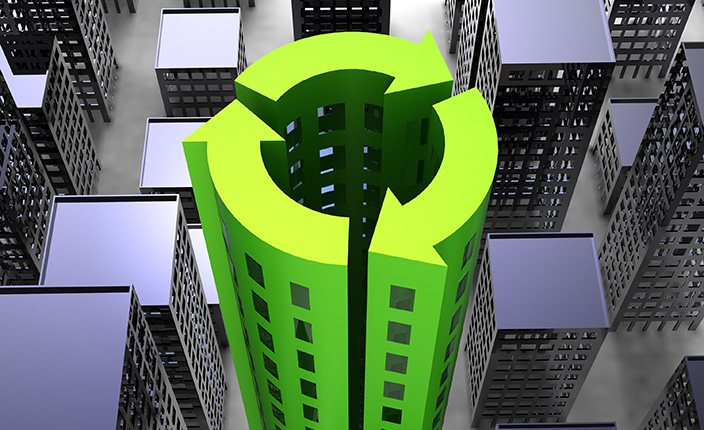The global climate change is creating a havoc in the environment. The consequences are much severe. It is affecting the housing and construction industry. The longevity of buildings has reduced because of pollution and climatic disturbances. Any concrete structure is susceptible to natural calamities like earthquakes, hurricanes, etc.
LEED is a voluntary certification that helps architects, designers and construction engineers to develop sustainable residential and commercial buildings. It involves the use of recycled, biodegradable and eco-friendly materials for construction. They focus on procuring the major source of energy from renewable sources like solar power, wind, and water. Rainwater harvesting is done to conserve water. Terrace gardens and green roofs are natural ways to reduce pollution, keep buildings cooler and reduce the absorption of UV rays. Architects design buildings that have access to natural sunlight which leads to less usage of artificial lighting. Planting trees and plants, installation of natural springs, bird feeders are economical ways to promote sustainability in any building complex and reduce pollution simultaneously.
Construction materials must be carefully chosen to promote sustainability. For example, choose a white cement for whitewashing the outdoors that are resistant to chemicals. Birla white cement is a trusted choice of cement. MP Birla manufactures the best quality cement in India.
OPC is the best choice of Portland cement for general construction works. It contributes to the strength and durability of the structure. Architects are striving to construct buildings that are sustainable. One Angel Square in Manchester has a high rating in sustainability standards. It uses biofuel as the chief source of energy. It is powered by plant oil-fueled combined heat & power system. The building uses grapeseed oil grown on the cooperative’s estate as fuel. Sun-Moon Mansion in Dezhou, China is constructed in the shape of a sundial. It is the largest solar-powered structure in the world. It has a hotel, a conference center, and offices that are all powered by solar energy. It also features a solar-powered hot water supply, energy saving glass, and 50000 square feet of solar paneling. If you have visited the Apple Campus 2 in Silicon Valley, USA, you’ll know that it is voted one of the greenest buildings on the planet. Apple is considering powering the entire campus with 100 % renewable sources of energy. As a part of reducing greenhouse gas emission in the campus, they have planted 7000 trees. This huge campus features office buildings, a research center, conference areas, and restaurants.
Most global enterprises use eco-friendly materials and energy efficient techniques to restore and preserve our environment. Architects are working in partnership with developers to promote sustainability. A sustainable design and construction have a positive impact on the environment. These sustainable buildings also serve as an inspiration to global developers and contractors.

